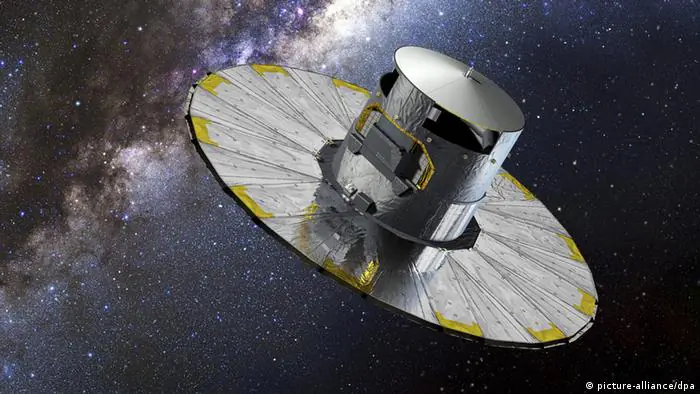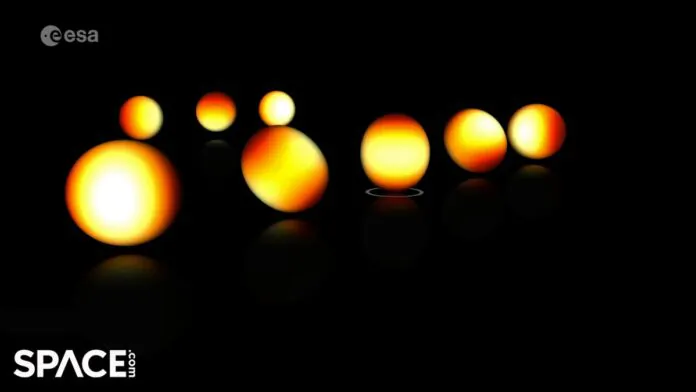© ROOT-NATION.com - Use of content is permitted with a backlink.
Gaia’s European mission to map galaxies has recorded the “sounds” of starquakes rippling across stellar surfaces, like a tsunami, and changing the shape of stars so that they can be detected from Earth.
Of course, the recording presented by the research team is not exactly a sound made by stars. It is called “sonification” – a translation of the received data into sounds. And scientists had to process a large amount of information before the record was released.

“Human beings cannot hear the true frequencies of these oscillation modes,” Conny Aerts, an astronomer at the Catholic University of Leuven in Belgium, said in a European Space Agency (ESA) press conference on Monday, (June 13). “We artificially multiplied them by a big factor of 8.6 million to bring them into the audible range of [human] ears.”
The sound of the starquake was released as part of a large body of data from ESA Gaia, which measures the exact positions, distances from Earth, speed and trajectory of 2 billion stars in our home galaxy, the Milky Way. Gaia measures the brightness levels of stars, and it is from these data that stargates were discovered.
“These vibrations make the stellar gas move up and down,” Aerts said. “And it changes the brightness of the star as a function of time. So it makes the stars blink in the sky.”

Starquakes, that propagate on the surface of the star like a giant wave, cause the surface to move during its rotation. According to astronomers, studying these stellar impulses will help astronomers better understand what is happening inside the stars.

“Blinking stars do offer astronomers a very powerful tool to study their internal physics and chemistry,” said Aerts. “It’s like earthquakes on Earth. Seismologists love earthquakes, if they’re not too violent, because these allow us to understand what is happening inside our planet. And astroseismologists actually do the same, but for stars.”
You can also help Ukraine fight with Russian occupants via Savelife or via an official page of the National Bank of Ukraine.
Read also:


